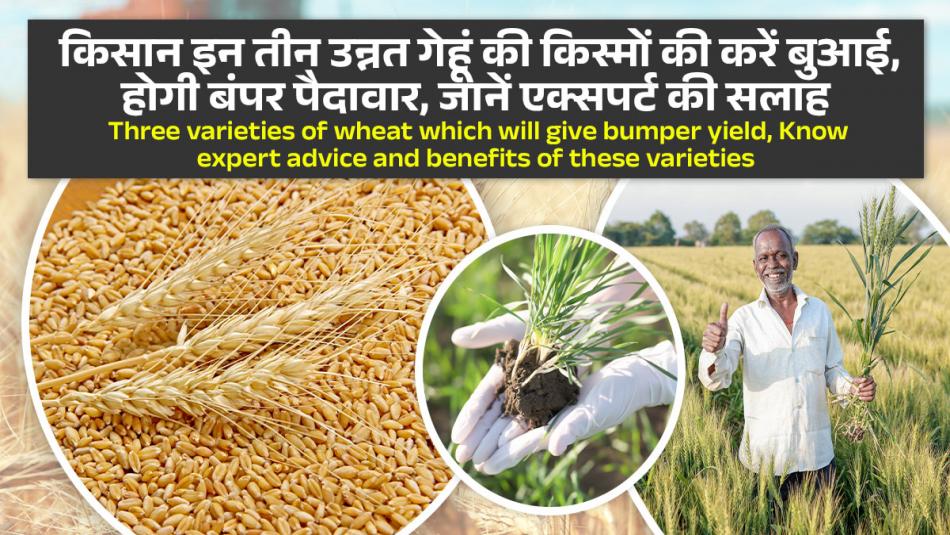Welcome to Krishi Dunia.

With the Rabi crop season underway, it's time for farmers to select the right wheat variety to ensure a successful harvest. The varieties DBW 359, DBW 303, and DBW 332 are high-yielding, trusted choices among farmers. By choosing these varieties, farmers can achieve better production and profits. Let’s explore the characteristics of each DBW variety in detail.
Developed by the Indian Institute of Wheat and Barley Research, Karnal (Haryana), DBW 359 is well-suited for limited-irrigation regions and is resistant to diseases like wheat blast and rust (leaf and stem).
This variety’s ability to yield well under limited irrigation makes it a valuable choice for farmers. In water-scarce areas, its productivity outpaces other varieties, offering significant benefits.
Notified in 2021, DBW 303 is ideal for irrigated fields in northwestern plains. The recommended sowing period is from October 25 to November 5.
Farmers in irrigated areas favor DBW 303 due to its high yield potential and disease resistance. With proper fertilization and growth regulator application during early sowing, farmers can achieve impressive yields.
Recommended for early sowing (October 20 to November 5), DBW 332 performs best under high input (150% NPK) and shows strong resistance to stripe and leaf rust, boosting yield potential.
DBW 332 is gaining popularity among farmers for its high resistance to diseases and suitability for early sowing, enabling farmers to profit from an early harvest.
Conclusion: Wheat varieties like DBW 359, DBW 303, and DBW 332 are known for their high yield potential and disease resistance. Choosing these varieties can help farmers maximize profits from their wheat crops.